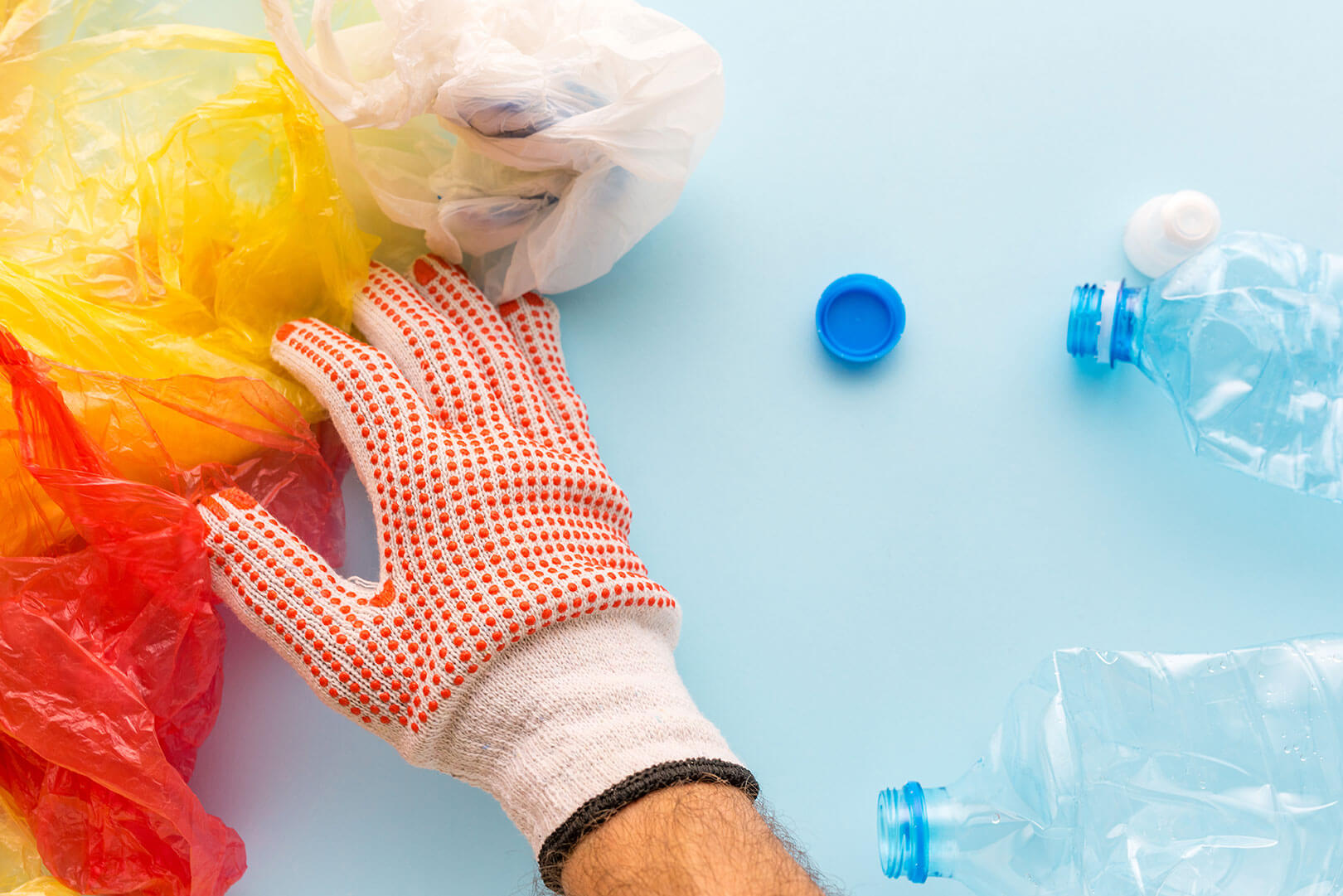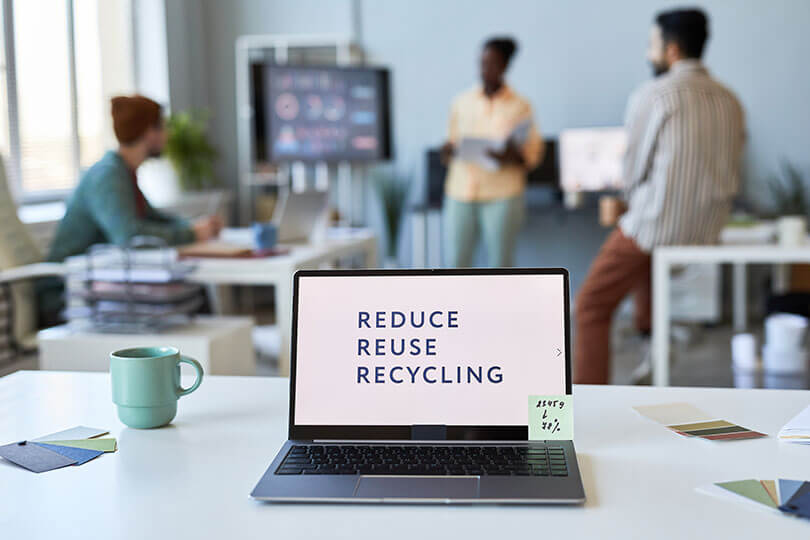Minutes to read: 4 minutes
 Photo by: stevanovicigor at EnvatoElements
Photo by: stevanovicigor at EnvatoElements
As the new year kicks off, everyone’s buzzing with excitement. It’s all about new stuff – fresh clothes, cool gadgets, and a bunch of new plans for the year. Businesses and families alike are ready to hit the refresh button and start the new year with their best foot forward.
But, trying out new stuff usually means ditching the old, and that’s not helping our plastic waste problem. To keep things eco-friendly and make sure businesses remain compliant with extended producer responsibility (EPR) legislation, here are some recycling trends coming up in 2024.
Why does recycling matter?
Recycling is not new. Even preschool students are taught the three Rs. We cannot understate the importance of solid waste management, which includes the conservation of valuable resources and the reduction in energy consumption and use of landfills1.
As a matter of fact, when we recycle and repurpose materials such as plastic packaging, we ultimately reduce the need for resource extraction and energy-intensive manufacturing processes. This helps alleviate the burden on the environment.
At the same time, recycling supports economic growth by creating jobs. It also fosters a culture of sustainability where manufacturers and households are engaged to adopt greener solutions to preserve the planet2.
9 recycling trends to look for in 2024
 Photo by seventyfourimages at EnvatoElements
Photo by seventyfourimages at EnvatoElements
As we approach 2024, we’re observing nine trends that are gaining traction or re-emerging in the landscape of sustainability. These trends have long-standing ties to environmental efforts, with many evolving over the years.
Today, they’re being reshaped by the increasing urgency for stronger eco-friendly practices. Let’s explore these trends that are setting the stage for a more sustainable future.
1. Increased emphasis on the circular economy
The concept of a circular economy, where products and materials are designed for reuse and recycling, has been gaining momentum. Governments have also put in place incentives for businesses that support circular initiatives. With the development of technology, this trend is expected to continue to reduce waste, promote responsible use of resources, and build a regenerative future in 2024 and beyond.
2. Advanced recycling technologies
Innovations in recycling technologies, such as chemical recycling and waste-to-energy solutions, are expected to play a more significant role in reducing the environmental impact of waste disposal.
More and more companies are utilizing the help of big data and AI in the fast and accurate formulation of solutions that can break down plastic and other materials in a faster yet safer manner3.
3. Single-use plastic reduction
Many regions and companies are implementing or planning to implement restrictions and bans on single-use plastic to reduce plastic pollution. In the Philippines, most local government units (LGUs) have encouraged the citizens to use eco-bags for their shopping needs. With LGUs implementing stricter sustainability practices and legislation, this trend is expected to continue in 2024.
4. E-waste recycling
With the increasing use of electronics, there has been a growing focus on e-waste recycling to recover valuable materials and reduce the environmental impact of electronic waste.
This is an emerging trend thanks to the novelty of technology and equipment that process e-waste4. In fact, it has garnered a lot of attention, especially in China and the European Union (EU) where most appliances and electronics are manufactured. Expect to see more news and laws supporting the management of e-waste in the coming years.
5. Consumer engagement
Public awareness about recycling and sustainability is growing. In fact, with the help of social media and the internet, news and environmental campaigns have become a lot easier to cascade to global audiences. This has created socially conscious consumers who actively look for and support companies who invest in environmental stewardship5.
In 2024, there will likely be more emphasis on consumer education and engagement to promote responsible recycling habits. This is especially true in schools and communities where public awareness is most needed.
6. Localized and community-based initiatives
Communities and local governments are increasingly taking initiatives to manage and process their waste locally, reducing the need for long-distance transportation of recyclables.
With the increase in floods and natural disasters, LGUs and respective homeowners associations are seeing the need to constantly improve the management of waste to prevent such phenomena6.
7. Sustainable packaging
Companies have been exploring sustainable packaging options to minimize the environmental impact of their products. This could include more use of reusable, biodegradable, or compostable materials.
Organizations like Plastic Bank have created recycled and recyclable materials such as Social Plastic® feedstock, which are integrated into new products and packaging.
8. Extended producer responsibility (EPR) programs
EPR has been in sustainable development for decades. However, it is only in recent years that it has emerged as one of the most potent policy tools at the disposal of LGUs and the national government in the Philippines.
By shifting the responsibility for recycling and managing waste from consumers to producers, the latter is compelled to be more aware and responsible for the negative environmental impact they create. Of course, the national government incentivizes these EPR programs, and this trend is expected to continue to grow.
9. Green financing and investment
More investments in recycling infrastructure and sustainable practices are expected, as environmental considerations become a focal point for investors. With the public becoming more particular with the brands they support, investors are keen to support businesses and enterprises that can generate a positive impact in the eyes of consumers.
Harnessing recycling trends in 2024
 Photo by seventyfourimages at EnvatoElements
Photo by seventyfourimages at EnvatoElements
Technological advancements have the potential to significantly amplify recycling efforts to reduce the global demand for virgin raw materials. The trends shown above provide a lot of promise that can be further improved and enhanced.
The trends identified in this article barely scratched the surface of all the innovative trends in 2024. Among others include molecular recycling, data analytics, and biological depolymerization which are all being developed as we speak.
Implementing these new trends into your business provides a competitive advantage and increases compliance to EPR laws. To better understand which programs work and fit for you, get in touch with one of our experts now.
- National Institute of Environmental Sciences, “Reduce, Reuse, Recycle,” www.nih.gov, Sep 03, 2019, Reduce, Reuse, Recycle | Kids Environment Kids Health - National Institute of Environmental Health Sciences (nih.gov)
- EA Crunden, How useful is recycling, really?,” www.atlantic.com, Jan 28, 2021, How Useful Is Recycling, Really? - The Atlantic
- Cardiff University, “New method of recycling colored plastics offers possible solution to 'huge environmental challenge,” www.phys.org.net, July 25, 2023 New method of recycling colored plastics offers possible solution to 'huge environmental challenge' (phys.org)
- New method of recycling colored plastics offers possible solution to 'huge environmental challenge' (phys.org)
- Jean-Christophe Gabriel, “New technologies to recycle electronic waste,” www.theconversation.com, March 29, 2020, New technologies to recycle electronic waste (theconversation.com)
- OECD, “Extended Producer Responsibility: Updated Guidance for Efficient Waste Management,” OECD 2016, https://doi.org/10.1787/9789264256385-en
- Gabriel Pabico Lalu, “Marikina has this uncanny discipline when it comes to trash,” www.inquirer.net, Nov 02, 2018, Marikina has this uncanny discipline when it comes to trash | Inquirer News